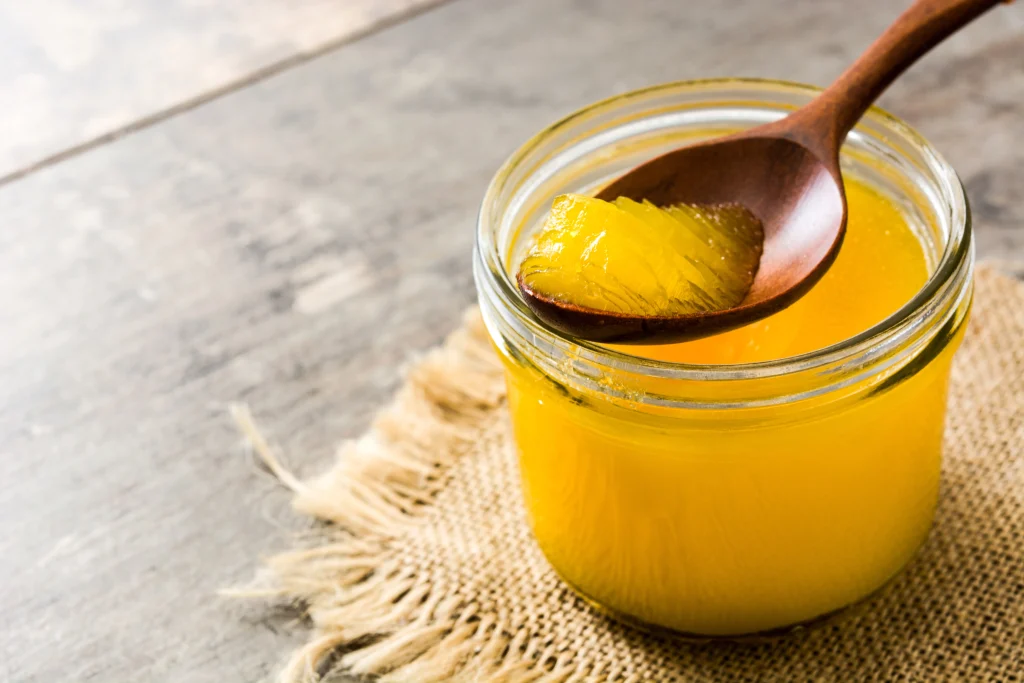
How to Differentiate Between Pure Ghee and Fake Ghee: A Buyer’s Guide
Introduction
In today’s market, the demand for high-quality cow ghee has surged, leading to an increase in counterfeit products. At Parambaryam Delight, we believe that consumers should be well-informed about the differences between pure cow ghee and fake ghee. This guide will help you navigate the world of ghee, ensuring that you invest in only the best cow ghee for your culinary needs.
Understanding Cow Ghee
Cow ghee is a clarified butter made from the milk of cows, prized for its rich flavor and numerous health benefits. Pure cow ghee is not only a staple in Indian kitchens but also a super food recognized for its versatility and nutritional value. It is free from lactose and casein, making it suitable for various dietary restrictions.Nutritional Profile of Pure Cow Ghee:
- Rich in healthy fats (monounsaturated and saturated)
- Contains fat-soluble vitamins A, D, E, and K
- High in butyrate, beneficial for gut health
Identifying Pure Cow Ghee vs. Fake Ghee
- Check the Ingredients
- Pure Ghee: Look for labels that explicitly state “pure cow ghee” or “organic cow ghee” with no added preservatives or artificial flavors.
- Fake Ghee: Many counterfeit products contain vegetable oils or hydrogenated fats. Always read the ingredients list carefully.
- Examine the Color and Texture
- Pure Ghee: Authentic ghee typically has a golden yellow color and a smooth, creamy texture.
- Fake Ghee: Imitation ghee may appear pale or have a waxy texture, indicating the presence of non-ghee fats.
- Perform the Water Test
- How to Test: Take a small amount of ghee and add it to a glass of water.
- Pure Ghee: Real ghee will settle at the bottom without forming any residue.
- Fake Ghee: If the ghee floats or leaves a residue, it may contain other oils.
- Smell and Taste Test
- Pure Ghee: The aroma of pure cow ghee is rich and nutty, with a distinct buttery flavor that enhances dishes.
- Fake Ghee: Counterfeit ghee often has a bland or chemical smell and lacks the rich flavor profile of authentic ghee.
- Check the Packaging
- Pure Ghee: High-quality ghee is often packaged in glass or BPA-free containers to maintain its purity and flavor.
- Fake Ghee: Products in flimsy plastic containers or those without proper labeling may indicate inferior quality.
- Price Point
- Pure Ghee: Quality cow ghee may be priced higher due to its manufacturing process and purity.
- Fake Ghee: If the price seems too good to be true, it probably is. Cheap ghee is often a sign of adulteration.
Why Choose Pure Cow Ghee?
Investing in pure cow ghee has numerous benefits, including:
- Digestive Health: The butyrate in cow ghee promotes gut health by reducing inflammation.
- Nutrient Absorption: Ghee aids in the absorption of fat-soluble vitamins.
- Culinary Versatility: Pure cow ghee can be used for cooking, baking, and as a spread, enhancing the flavor of your dishes.
Conclusion
When it comes to choosing the right ghee, being informed is key. By following this buyer’s guide, you can confidently differentiate between pure cow ghee and fake ghee, ensuring you choose the best cow ghee for your culinary creations. At Parambaryam Delight, we offer organic cow ghee that meets the highest quality standards, so you can enjoy the richness and health benefits that only pure ghee can provide.
